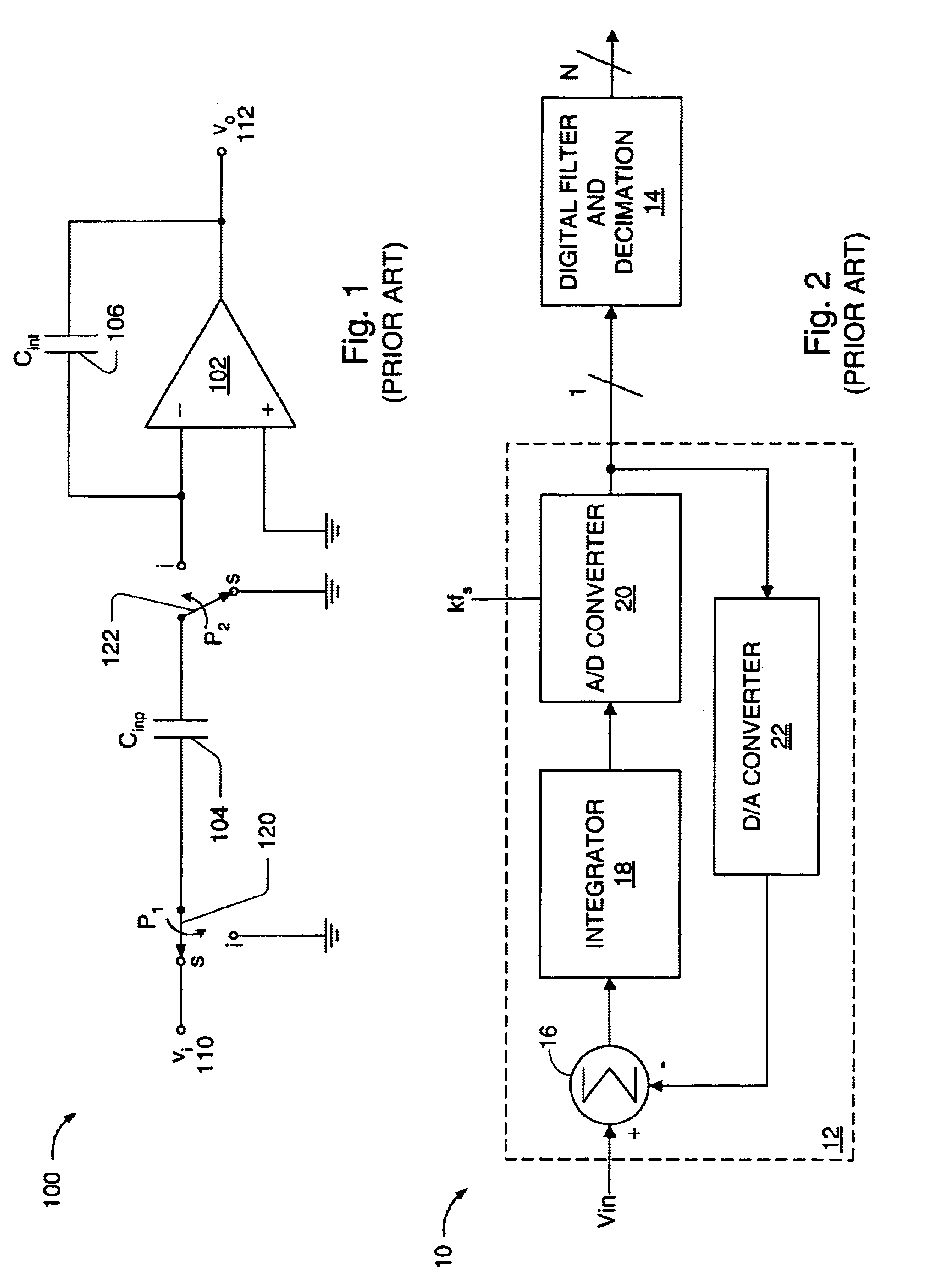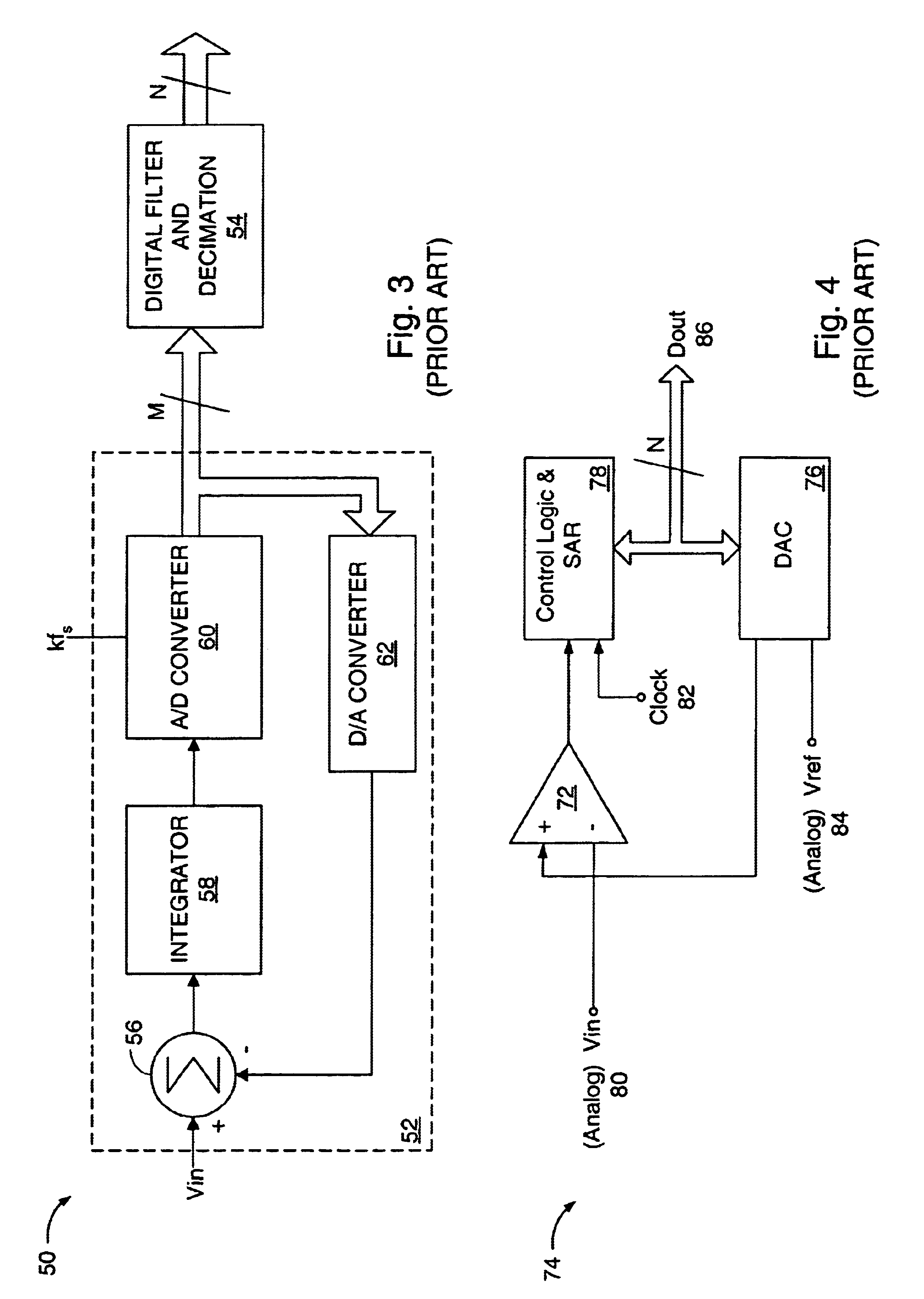Highly accurate switched capacitor DAC
a switched capacitor and high-accuracy technology, applied in the field of analog circuit design, can solve the problems of linearity errors of multi-bit d/s converters, directly affected by the accuracy of their internal dacs, and its use is typically restricted to low-bit dacs, so as to minimize even-order errors, improve accuracy, and reduce power consumption.
- Summary
- Abstract
- Description
- Claims
- Application Information
AI Technical Summary
Benefits of technology
Problems solved by technology
Method used
Image
Examples
Embodiment Construction
[0027]As used herein, when referencing a pulse of a signal, a “leading edge” of the pulse is a first edge of the pulse, resulting from the value of the signal changing from a default value, and a “trailing edge” is a second edge of the pulse, resulting from the value of the signal returning to the default value. A first signal is said to be “corresponding” to a second signal if the first signal was generated in response to the second signal. When data is said to be “registered” or “latched”“using” a signal, the signal acts as a trigger signal that controls the storing of the data into the register or latch. In other words, when a signal “used” for registering or latching data is in its triggering state, the data residing at respective input ports of the register or latch is stored into the register or latch. Similarly, when data is latched “on the leading edge” or “on the trailing edge” of a pulse of a clock, the data residing at respective input ports of a register or latch is stor...
PUM
 Login to View More
Login to View More Abstract
Description
Claims
Application Information
 Login to View More
Login to View More - R&D
- Intellectual Property
- Life Sciences
- Materials
- Tech Scout
- Unparalleled Data Quality
- Higher Quality Content
- 60% Fewer Hallucinations
Browse by: Latest US Patents, China's latest patents, Technical Efficacy Thesaurus, Application Domain, Technology Topic, Popular Technical Reports.
© 2025 PatSnap. All rights reserved.Legal|Privacy policy|Modern Slavery Act Transparency Statement|Sitemap|About US| Contact US: help@patsnap.com



